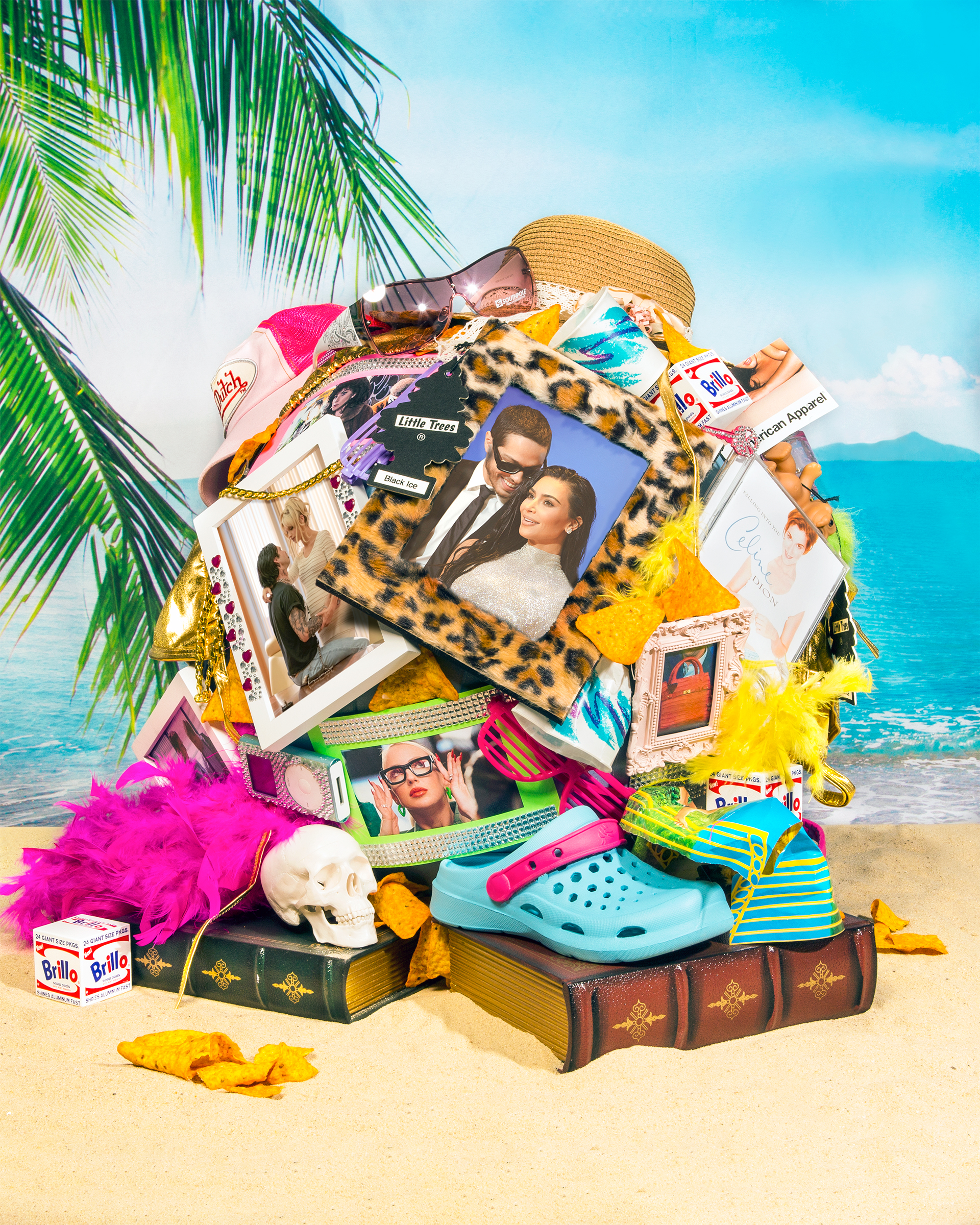
In 2022, pop culture is doing the most. Consider some of the most memorable images to come out of the entertainment industry recently: Mr. Big campily keeling over on his Peloton in And Just Like That… Nicole Kidman baring an impossible 3 feet of midriff on the cover of Vanity Fair. The sight of dopey, meme-based game show Is It Cake? claiming the No. 1 slot on Netflix.
Everything is suddenly bigger, brighter, louder, raunchier. Designers are hawking hot-pink suits, belt-length skirts, and logo-plastered handbags. After a boom in scripted programming, trashy reality TV is surging, in a resurgence fueled by self-consciously trashy shows like Selling Sunset and FBoy Island. The most salient new sound in recent years is hyperpop, a dizzyingly hooky, wildly referential microgenre that has been described by one of Spotify’s influential “data alchemists” as “ebullient electro-maximalism.”
We have entered an era of exuberant, even apocalyptic, bad taste. Call it a vibe shift if you must. Certainly, there is a youthful element to this bad-taste renaissance. Trendspotters have glommed on to the Y2K nostalgia and end-times decadence in Gen Z’s nascent aesthetic sensibility (see: the skimpy, iridescent fashions of Euphoria). But what we’re witnessing goes far beyond cool teens and the extremely online to encompass anyone with free time, disposable income, and internet access.
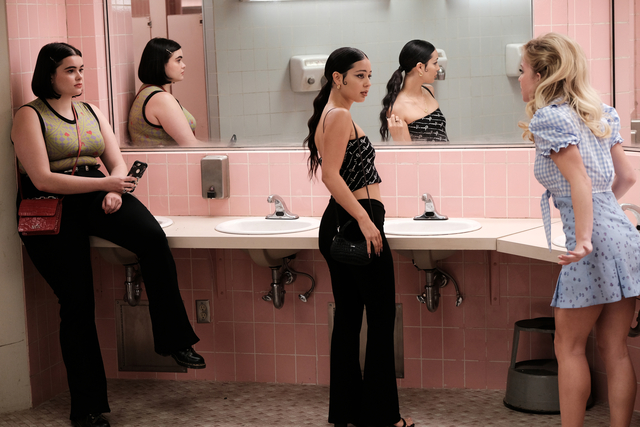
What we’re dealing with is a full-blown cultural moment. The 20-year nostalgia cycle, climate-change nihilism, information saturation, streaming-era content overload, and our collective Long COVID of the soul have converged in a tidal wave of tackiness. What TikTok teens, white collar workers marooned in home offices, and the gatekept super-rich all have in common is the kind of physical isolation, if not the sense of doom, that makes a person desperate just to feel something. And nothing kills numbness like a sensory onslaught—color, sound, hedonism, melodrama, sleaze. Yet what’s remarkable about this particular pendulum swing is that after centuries of wrestling with hierarchies of taste, the cultural stigma that has always come with indulging in bad taste has disappeared.
Bad taste can be tough to define, because standards are changing all the time. For women in the Victorian era, wearing makeup was considered cheap. Rock snobbery would’ve baffled 1950s parents scandalized by Elvis’ hips. In the 1970s, Pink Flamingos and Beyond the Valley of the Dolls epitomized bad-taste cinema; now they’re in the Criterion Collection. Such evolution is the result of constant, generational negotiations—ones that intensified in the 20th century, as rapid advancements in technology yielded radio, records, movies with sound and TV, which could bring a night at the opera to the masses but more often cranked out cliché-ridden love songs.
During the prosperous postwar years, as college attendance skyrocketed and the middle class swelled, adjudicating hierarchies of taste became something of a parlor game. In 1949, a rubric in Life ranked “everyday tastes” from highbrow (Eames furniture, ballet) to lowbrow (“mail order overstuffed chair,” westerns). High-minded critics such as Dwight Macdonald took aim at culture as product, but defenders of popular tastes emerged. Maybe the manufacturers of mass media prioritized profits over art, but art made its way into some of their wares anyway. “Trash has given us an appetite for art,” Pauline Kael noted in her snobbery-shattering 1969 essay “Trash, Art, and the Movies.” In other words, the scrappy subversiveness of B movies can ignite a passion for more sophisticated cinematic subversion.
Around the same time, hierarchies of taste were muddied by other divisions within society. Boomers raised on rock ’n’ roll anointed the Beatles as geniuses. The Western canon faced scrutiny within academia for its whiteness and maleness. John Waters elevated the practice of self-consciously reveling in bad taste, a.k.a. camp, to an art form. The Twilight Zone’s cultural commentary occasionally cut deeper than that of the Partisan Review. Andy Warhol enshrined Campbell’s and Brillo in galleries, and 60 years later we’re still arguing over whether he was celebrating or critiquing mass-market consumerism.
What’s become ever more apparent is that there’s no such thing as an objective taste hierarchy. The old high-low spectrum was policed by people who shared identity markers, experiences, and educational backgrounds, so it reflects their prejudices. As the music critic Carl Wilson wrote in 2007’s Let’s Talk About Love, a treatise on taste in the time of poptimism framed by Wilson’s investigation into his own inability to enjoy Celine Dion, “Pop songs and movies and genre fiction and magazines are so appealing, achieve so much aesthetically for so many people, that snobbery cannot hold the line against them.”
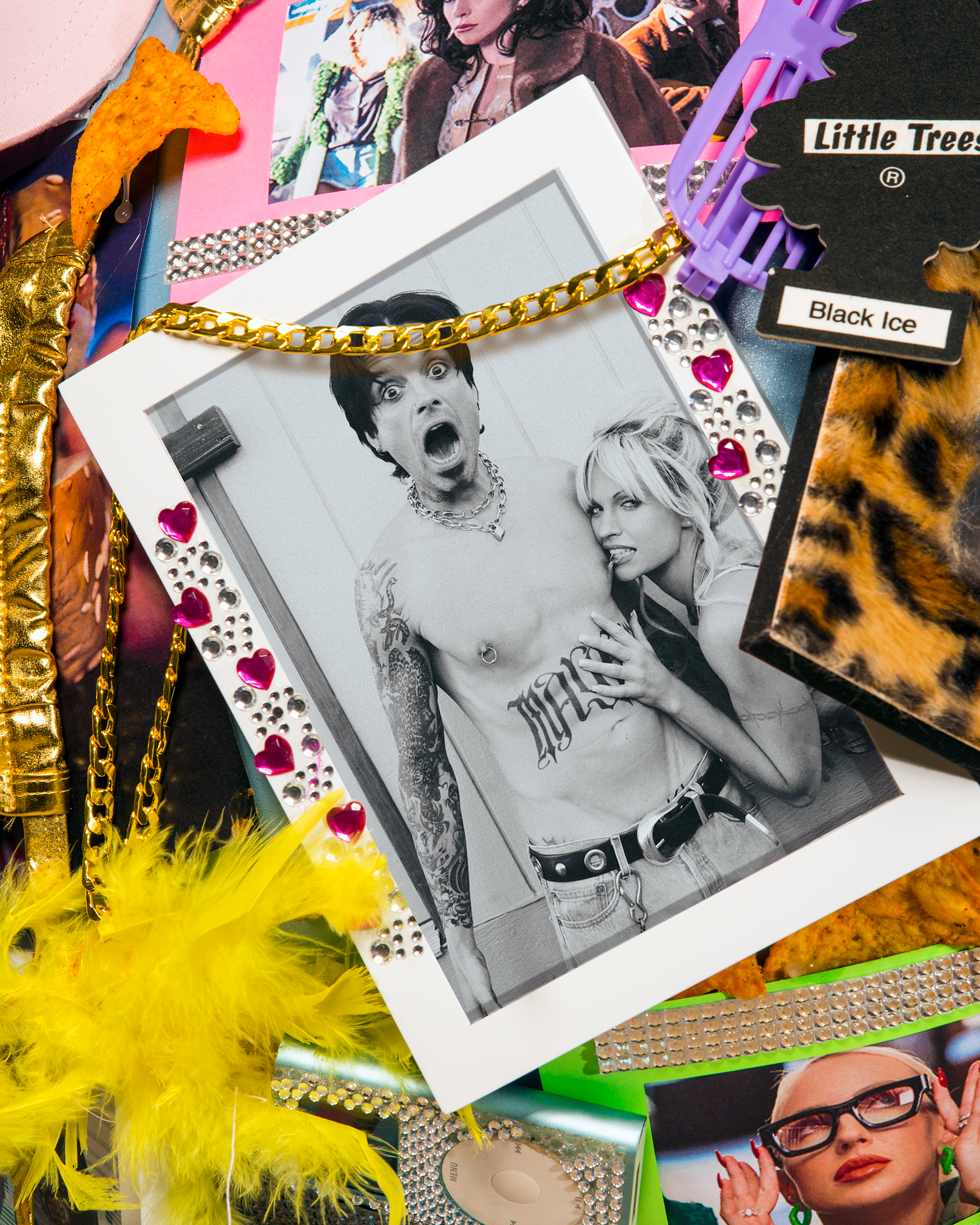
The upshot of taking mass culture seriously has been a growing awareness that much of what we call good taste is merely an aesthetic like any other. “Unless you have a thing for white-power anthems, the claim now goes, there is no reason ever to feel guilty or ashamed about what you like,” Wilson writes. “And I agree, though it’s curious how often critics’ ‘own enjoyment’ still takes us all down similar paths at once.” Was True Detective really a great show in its first season, for instance, or did critics respond more profoundly than the average person to brooding characters who say things like “Time is a flat circle”?
If the markers of good taste are superficial, then the same goes for bad taste. Umberto Eco efficiently sketched out the aesthetic in 1989’s “The Structure of Bad Taste”: “A dress designed so as to enhance the charms of its wearer is not, by definition, a product of bad taste (though it would be if it drew the attention of the viewer only to the more obvious attributes of the wearer, thus reducing her personality to a mere prop for one particular physical trait).” Where good taste is demure, bad taste is bawdy. Where good taste is minimalist, bad taste is maximalist. Where good taste whispers, bad taste screams: “Look! React! Feel!”
Bad taste is, then, a value-neutral style that revels in schlock, camp, and raunch for their own sakes. What it isn’t, for our purposes, is what I’ll call poor taste—tasteless in a mean way. If bad taste is wearing a gold lamé bikini to the Oscars, poor taste is joking about someone’s disability at the ceremony, or responding to said joke by slapping the comedian who made it.
One component of the current bad-taste aesthetic is nostalgia. Every few years, we find a new moment from the too-recent past, however unlikely, to idealize, and right now that period is the 2000s. As Olivia Rodrigo brings back the punky pop of artists like Avril Lavigne and Paramore, teens are reviving jeans that don’t hug hips so much as cling to them for dear life. A 24-year-old fan of indie sleaze, a subcategory of aughts lifestyle nostalgia epitomized by tight and flashy American Apparel basics, told Harper’s Bazaar that the bad taste is the point: “I love how random and tacky it is.” Who could blame her for idealizing an era before young adults had to worry about COVID, the end of Roe v. Wade, and the threat of environmental apocalypse?
But even if this particular vibe originated with Gen Z, it was co-opted by their profit-motivated elders almost instantly. Revisionist media coverage has brought the tabloid-hounded women of the aughts—Britney Spears, Paris Hilton, even the late Brittany Murphy—back into the limelight. Streaming services have rushed out documentaries on Von Dutch and Abercrombie & Fitch. Thong-baring, logo-plastered Y2K fashion has dominated high-fashion runways since 2020.
Yet every isolating side effect of the pandemic has more profoundly affected a broader swath of the population than any twinge of nostalgia could. Antidepressant prescriptions spiked in 2020. Streaming exploded as we self-medicated with content. By the time most people started easing back into life outside our living rooms, a still ongoing process, numbness and entertainment overload had become pandemics unto themselves. We hadn’t done anything in over a year, but it felt as though we’d seen everything.
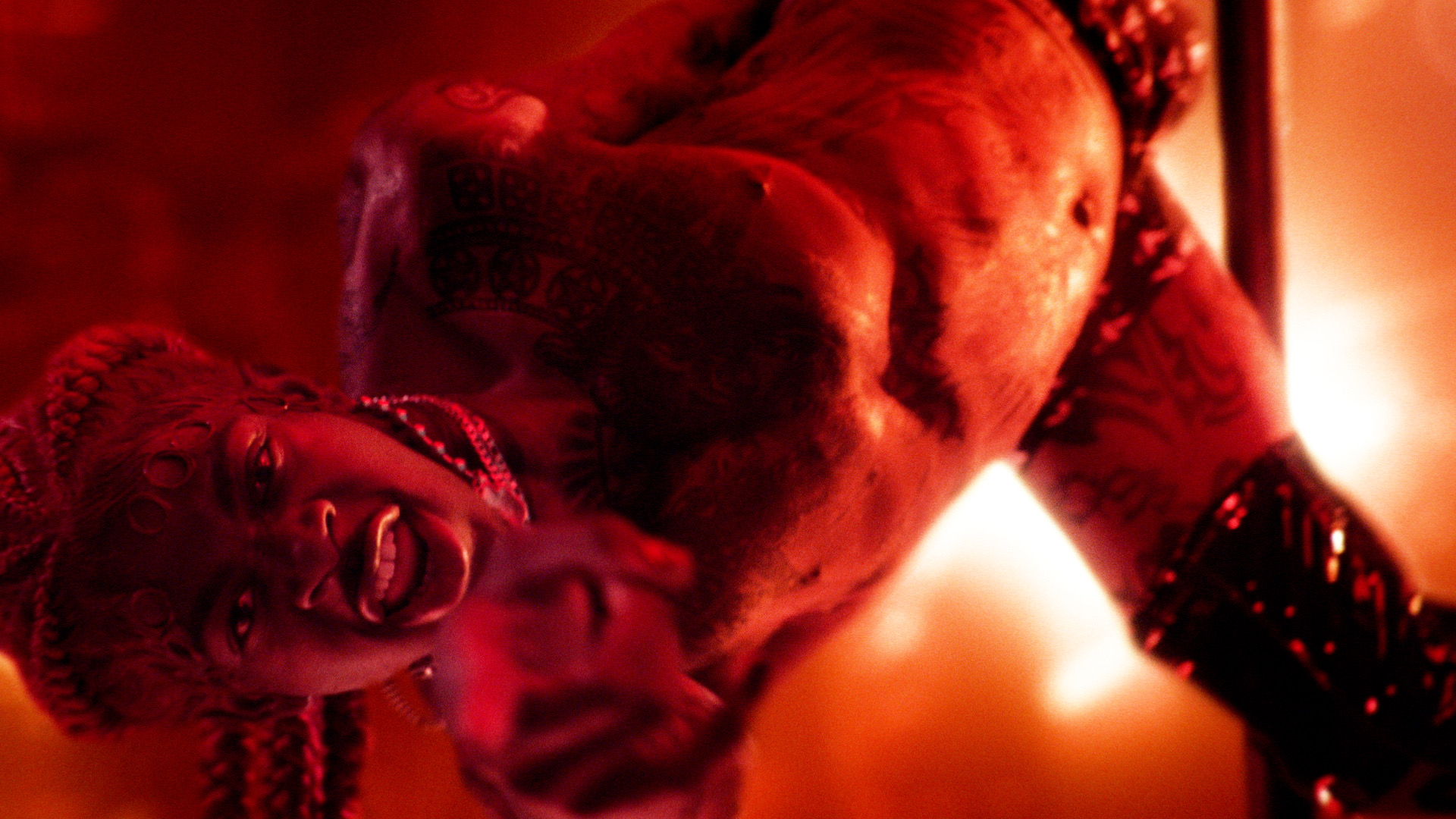
Now it takes more energy, more audacity, more spectacle to jolt us out of our malaise—and that’s where bad taste comes in. Keep your gentle ballads; 100 gecs, a hyperpop act known for its warp-speed genre collages, recently combined hard-rock guitar, pop-punk vocals, and conspicuous Auto-Tune in “Doritos & Fritos.” The chorus is just the song title repeated with anthemic intensity. Last year, Lil Nas X, who rose to fame with the wholesome novelty hit “Old Town Road,” reinvented himself with an album cycle defined by gay sex and cartoonish invocations of Satanism.
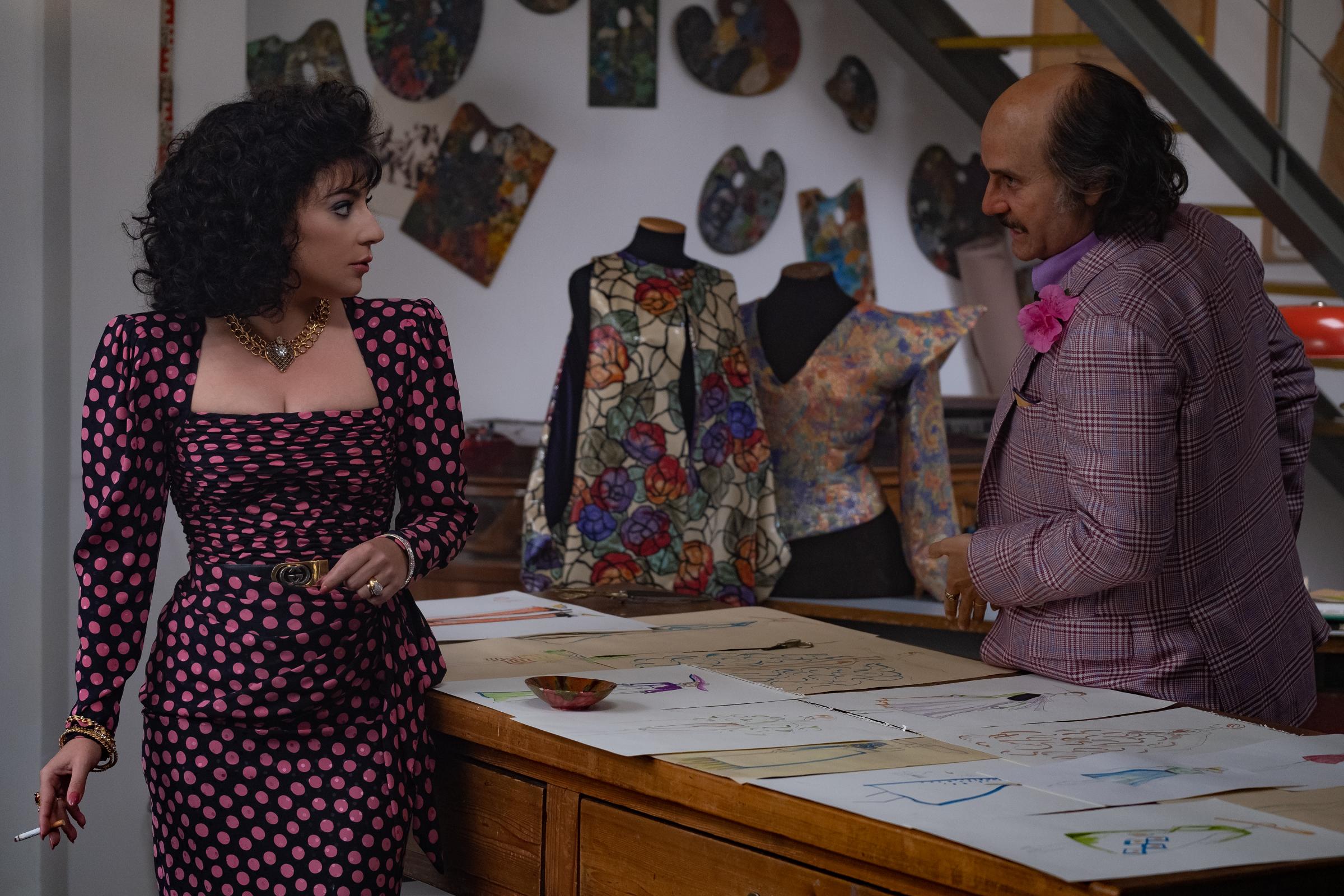
The New York Times’ Kyle Buchanan noticed an analogous phenomenon in awards-season movies: big, flashy performances in movies audiences are supposed to take seriously. Citing A-listers like Jared Leto, Jessica Chastain and Lady Gaga, Buchanan wonders if after months indoors “it’s invigorating simply to watch actors shake off their shackles and go for broke.” The trend has reached TV, from Kidman’s goofy accent in Nine Perfect Strangers to Sean Penn’s grotesque makeup in Gaslit to Renée Zellweger’s fat suit in The Thing About Pam. Everything about Pam & Tommy is a paean to bad taste.
No single human encapsulates our bad-taste moment like Pete Davidson, who plays up his dirtbag swag, proudly reps Staten Island, and now sits at the dead center of pop culture by virtue of dating Kim Kardashian. No single image captures it more vividly than the photo that circulated, this past fall, of Megan Fox kissing Machine Gun Kelly side-by-side with Kourtney Kardashian kissing Blink-182’s Travis Barker in the bathroom at MTV’s VMAs. (No one embraces a trend like reality TV’s first family.) Tongues are out, dresses are tight and tiny, the men bring big mall-punk energy and, in Barker, the group even boasts a true Y2K throwback.
What’s remarkable about all this is not that it’s happening so much as the absence of any notable mainstream backlash. (Even among far-right pundits, who pay their bills by fulminating against the alleged moral bankruptcy of the entertainment industry, the pearl-clutching about Cardi B and Megan Thee Stallion’s gleefully filthy 2020 hit “WAP” felt as perfunctory as it was accidentally hilarious.) Invented by the rich to shame the plebes, bad taste had shed its classist connotations by the time “Paris the heiress” started living in tracksuits and trucker hats. But even then, media scolds were always wringing their hands over all the partying, and the promiscuity, of female celebrities in particular. These days, Perez Hilton is no longer scrawling “whore” on paparazzi photos of Lindsay Lohan. The same fashion establishment that chafed over populist youth trends like grunge in the ’90s and style blogs in the aughts is not just drawing inspiration from Euphoria but sending its stars down the runway.
It makes sense that norms are shifting in this direction as Gen Z’s influence spreads. Raised on social media, with access to once illicit bad-taste touchstones like Rocky Horror just a click away, they’ve largely replaced IRL subcultures with a constellation of aesthetics—cottagecore, dark academia, Y2K—to be performed, then discarded or demoted to just another aesthetic in the rotation. Black mesh used to signify a goth identity; now, it doesn’t make you a Cure fan any more than a floral frock makes you a denizen of a cottage in the English countryside. There’s obviously something shallow about trading genuine cultural affinity for cosplay, yet it also reflects an understanding that style can signify a fleeting personal or societal mood more than a fixed identity.
By this logic, big plastic earrings aren’t inherently tacky; they’re props of the fancy-grandma aesthetic. Slutcore does not imply any particular behavior. You don’t have to get into hard drugs to appreciate cocaine decor. Gaudy is a state of mind. Perhaps the backlash isn’t coming because there’s so clearly nothing of substance to get up in arms about. Who but the dourest prudes are left to trash the bad-taste aesthetic, when we’re all busy trying to shock the pandemic into submission by living—vicariously, if not physically—as if we’re immortal?
This era of exuberant bad taste has yet to peak. With warm weather on the horizon, we are surely in for a season of orange tans, animal-print caftans, raunchy pop bangers, and other forms of maximalist entertainment. (Look out for lily-gilding auteur Baz Luhrmann’s Elvis, hitting theaters the first Friday after the summer solstice.) And that’s not just fine—it’s healthy. Like the decadent art that bridged the 19th and 20th centuries, bad taste is hastening the burnout of a cultural landscape built for an obsolete reality. If society can be salvaged, our current convergence of traumas will yield new, more relevant and resonant aesthetics, just as the cataclysm of World War I ushered in modernism. If not, well, at least there was fun to be had at the end of days. As high priestess of bad taste Lana Del Rey sang, “The culture is lit and if this is it, I had a ball.”
More Must-Reads from TIME
- Donald Trump Is TIME's 2024 Person of the Year
- Why We Chose Trump as Person of the Year
- Is Intermittent Fasting Good or Bad for You?
- The 100 Must-Read Books of 2024
- The 20 Best Christmas TV Episodes
- Column: If Optimism Feels Ridiculous Now, Try Hope
- The Future of Climate Action Is Trade Policy
- Merle Bombardieri Is Helping People Make the Baby Decision
Contact us at letters@time.com